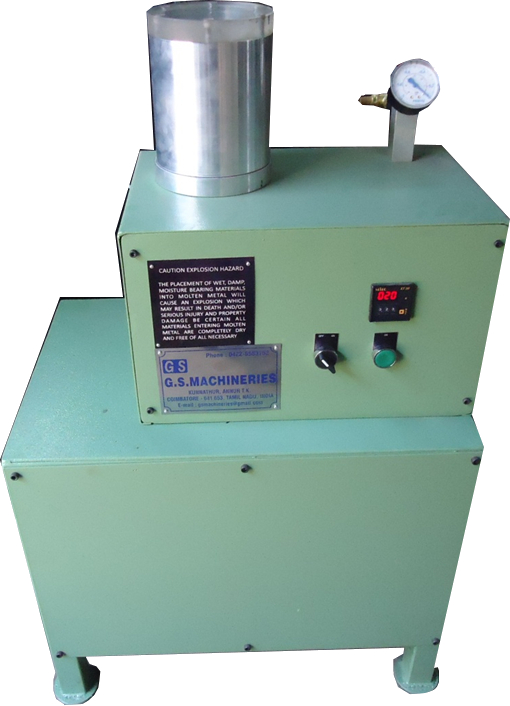Technical Specification:
Max Pressure = -0.8 bar/-25 in Hg
Motor = 0 .25 hp
Description:
An Important factor to be considered to test the quality of aluminum cast in checking for the presence of bifilm. Bifilms are oxide layers formed during solidification on the surface of the melt. The presence of bifilm can be identified by porosity testing. When the metal is poured or stirred the bifilm layers formed at the top of the melt folds and drowns in the melt. Presence of bifilms in the melt can results in cracks after solidification. This results in low strength areas. During porosity testing, low-pressure environment is induced this causes the bifilms to expand because of positive pressure in the bifims. Once the melt solidifies, it can be cut to check the size of the pores formed. Bifilm index also indirectly measure hydrogen content in the cast. Porosity testing cannot independently identify hydrogen content as bubbles will not form without the presence of bifilms. It should be noted that porosity forms even without the presence of hydrogen, but the pore size can increase under high hydrogen concentration. Correlation between the properties of the aluminum with the bifilm index have been previously made by empirical tests. The general idea is as bifilm index increases toughness decreases. For a 40x55x15 mm cast a good rule of thumb is a bifilm index of 10mm represent a good quality of the cast, 10- 50mm represents adequate quality and anything above 50mm is considered low in quality.
Send us an email for further technical assistance or quotation with the Model name. Our Technical team will contact you as soon as possible. Contact details are available in the contact us link.
